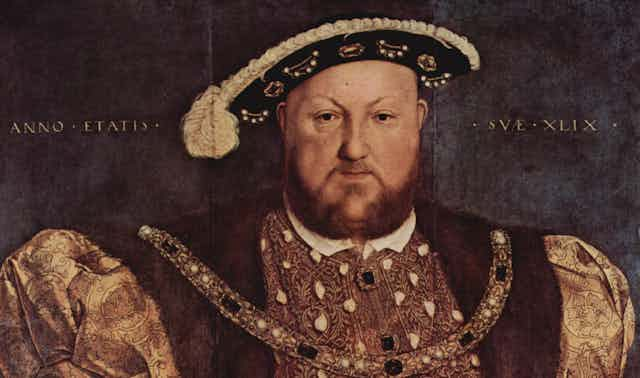As Britain awaits a ruling from its supreme court on whether the government can trigger Article 50 to leave the European Union without consulting parliament, the relationship between law and politics has come under intense and sometimes hostile scrutiny. Gina Miller, the lead claimant bringing the case against the government, and the high court judges who decided in favour of parliament’s involvement, have been derided as “traitors” and “enemies of the people”.
The situation has also exposed an ambiguity about where executive power properly lies in a representative democracy: with the government, acting by royal prerogative, or with parliament. Yet parliament and a distinctive legal system have long been a focus for English national identity. They were particularly important at a formative moment for English sovereignty: when Henry VIII broke with the Church of Rome in the early 1530s.
Despite Labour leader Jeremy Corbyn’s recent caricature of history, when he accused the prime minister, Theresa May, of acting like Henry VIII, the mechanisms that the Tudor king used to break with Rome were far from autocratic.
Parliament and Rome
Masterminded by his chief minister, Thomas Cromwell, the split from Rome relied on a series of acts of parliament. These bolstered royal powers: England became the only nation where the head of state was also head of its church. However, the acts did so by embedding the authority of the crown within parliament and by celebrating the common law. While the rest of Europe – including Scotland, then a separate kingdom – followed the civil code, based on Roman law, common law was distinctively English.
The 1533 Act in Restraint of Appeals was a foundation in this process. Its opening statement asserted the monarch’s independence from foreign authorities:
By diverse, sundry old, authentic histories and chronicles it is manifestly declared and expressed that this realm of England is an empire.
But even as it proclaims royal supremacy, it endorses the role of parliament – a tripartite body, comprising king, nobility, and commons – in making the “sundry ordinances, laws, statutes, and provisions” which ensure English liberties.

Cromwell’s appeal to history (the old, authentic chronicles) was a legal fiction, but – in its reliance on precedent – it demonstrates how the statute was shaped by common-law thinking.
Move against foreign influence
Cromwell ordered that the act be widely disseminated: by preachers, proclamations, and printed copies affixed to every church door. As a result, it had a far-reaching effect. It established the sovereignty of the crown in parliament, and it enshrined a concept of Englishness which was suspicious of the interference of supranational jurisdictions and which took pride in the autonomy of its crown, church, and idiosyncratic legal system.
When the ballad-maker Martin Parker listed the institutions which would protect England from the foreign influence of Jesuit priests in a broadside ballad circa 1624, it was quite usual that – alongside “our king” – he should name “our laws” and “our Parliament Royal”.
This conception that England was a “mixed” constitution was not novel. The lawyer John Fortescue outlined it nearly a century earlier in the late 1460s in De laudibus legum Angliae (In praise of the law of England), which explains that royal authority derived from parliament: parliament passed laws, which were upheld by judges, operating independently of the monarch.
Fortescue’s theory gained purchase under the Tudors. De laudibus was first printed in 1545-6 and eight further editions followed before 1600. It was translated into English in 1567, adorned with a title page celebrating the exceptionalism of English law as excelling “all other laws of the world”.
Not above the law
The conviction that English monarchs were not above the law became integral to English political identity. In the early 17th century, as tension between crown and parliament grew, one manuscript dialogue argued for holding annual parliaments, thus removing from royal prerogative the right to summon parliament.
Its anonymous author compared the law to the “sinews” that “knit … the body in perfect unity” and parliament to the “heart … whereby the body is nourished and maintained”. Within the logic of this metaphor, the king (“the politic head”) cannot “change the laws of that body, or withdraw from the people their proper substance”.
Belief in the primacy of law and parliament entered popular discourse. Around 1555, during the reign of Mary I, a short pamphlet, printed on a single sheet of paper, posed “certain questions” to be “demanded … by the noble realm of England”. The pamphlet delegitimised Mary for violating the laws of the land and positioned parliament as a representative body, constituted not to do the “pleasure … of his prince”, but to “speak … for the profit of the poor man and the wealth of the realm”.
When newspapers attack judges as traitors and Corbyn compares May’s Brexit strategy to Henry VIII’s, both the papers and the Labour leader would be well-advised to revisit their Tudor history. Henry’s break with Europe was enacted through parliament. It also endorsed English common law, determined according to precedent by an independent judiciary. Miller’s case, now being reviewed in the supreme court, is not a betrayal of British democracy: it embodies it.

